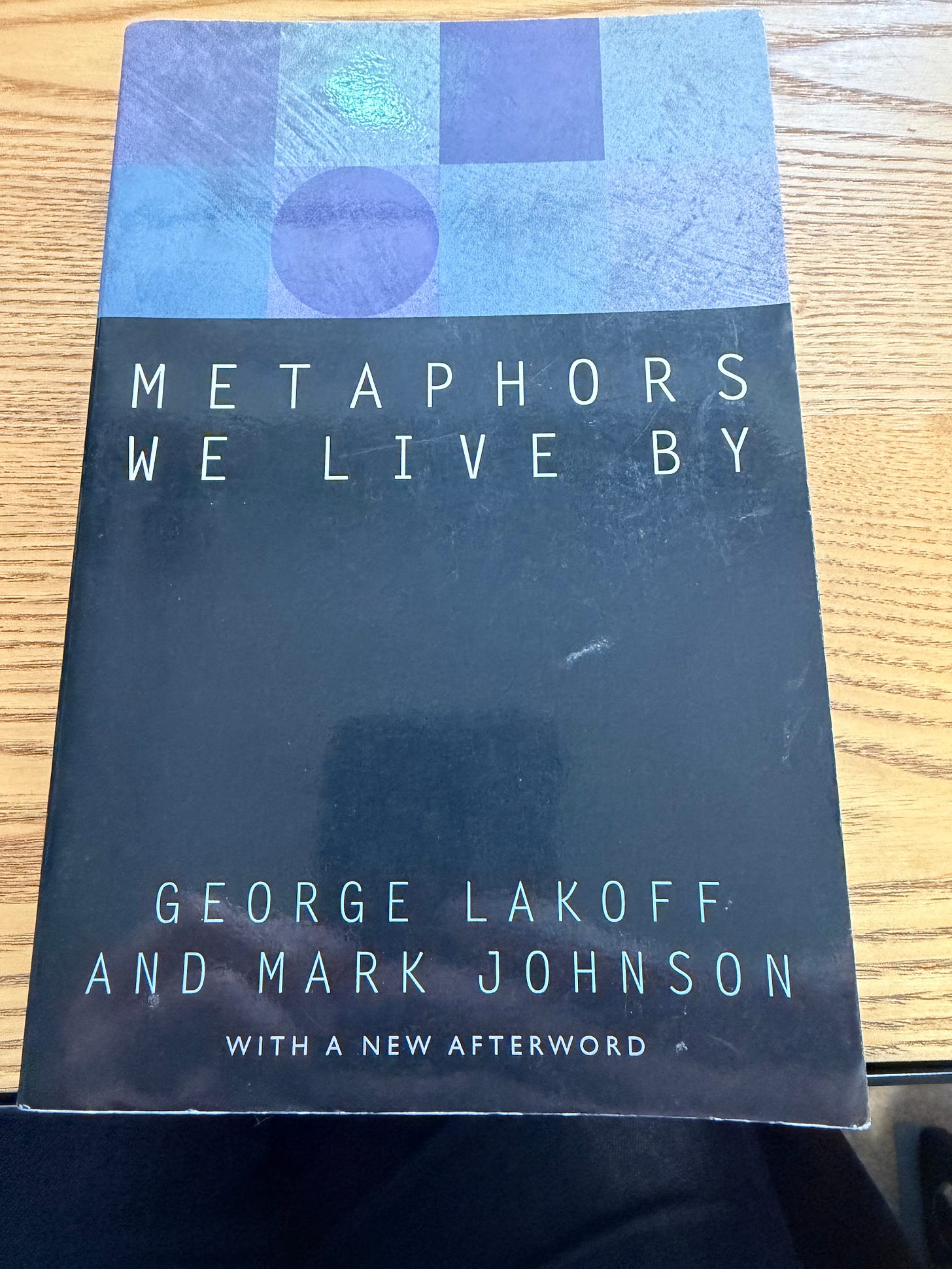BOOK REVIEW: The Hidden Architecture of Thought: A Review of Metaphors We Live By
Metaphors we live by: George Lakhoff and Mark Johnson
George Lakoff and Mark Johnson’s Metaphors We Live By (1980) remains one of the most consequential books in cognitive linguistics, and after revisiting it through the lens of contemporary AI development, I’m convinced its insights are more urgent than ever. This isn’t merely an academic treatise on language; it’s a fundamental interrogation of how conceptual structures shape reality itself.
The Central Argument
The book’s thesis is deceptively simple yet profound: metaphor is not merely decorative language or poetic flourish but rather the primary mechanism through which we understand abstract concepts. As Lakoff and Johnson write, “the essence of metaphor is understanding and experiencing one kind of thing in terms of another.” More critically, they argue that “human thought processes are largely metaphorical” and that our conceptual system, “in terms of which we both think and act, is fundamentally metaphorical in nature.”
The authors demonstrate this through systematic analysis of everyday language. Consider the conceptual metaphor ARGUMENT IS WAR. We don’t simply talk about arguments using war terminology; we structure the entire activity through martial concepts. We speak of positions being “indefensible”, arguments being “attacked”, criticisms being “on target”, and counterarguments that “demolish” an opponent’s case. This isn’t coincidental linguistic decoration. The metaphor structures how we conceive of argumentation itself: as adversarial, competitive, with winners and losers.
Yet here’s where Lakoff and Johnson’s analysis becomes genuinely revelatory. They ask us to imagine a culture where ARGUMENT IS DANCE, where “participants are seen as performers, and the goal is to perform in a balanced and aesthetically pleasing way.” In such a culture, people would experience arguments fundamentally differently. They wouldn’t be arguing at all in our sense; they’d be doing something else entirely.
This example reveals what the authors call the “highlighting and hiding” function of metaphor. The WAR metaphor highlights the competitive, adversarial aspects of argument whilst systematically obscuring its collaborative, truth-seeking dimensions. Every metaphor illuminates certain features whilst casting others into shadow.
The Systematic Nature of Metaphorical Thought
The book presents several categories of conceptual metaphors. Orientational metaphors structure concepts through spatial relations: HAPPY IS UP (”I’m feeling up today”), SAD IS DOWN (”I’m feeling down”), MORE IS UP (”prices are rising”). These aren’t arbitrary. They’re grounded in our embodied experience: when we’re sad, our posture typically droops; when we’re healthy and awake, we stand upright.
Keep reading with a 7-day free trial
Subscribe to Discarded.AI to keep reading this post and get 7 days of free access to the full post archives.


